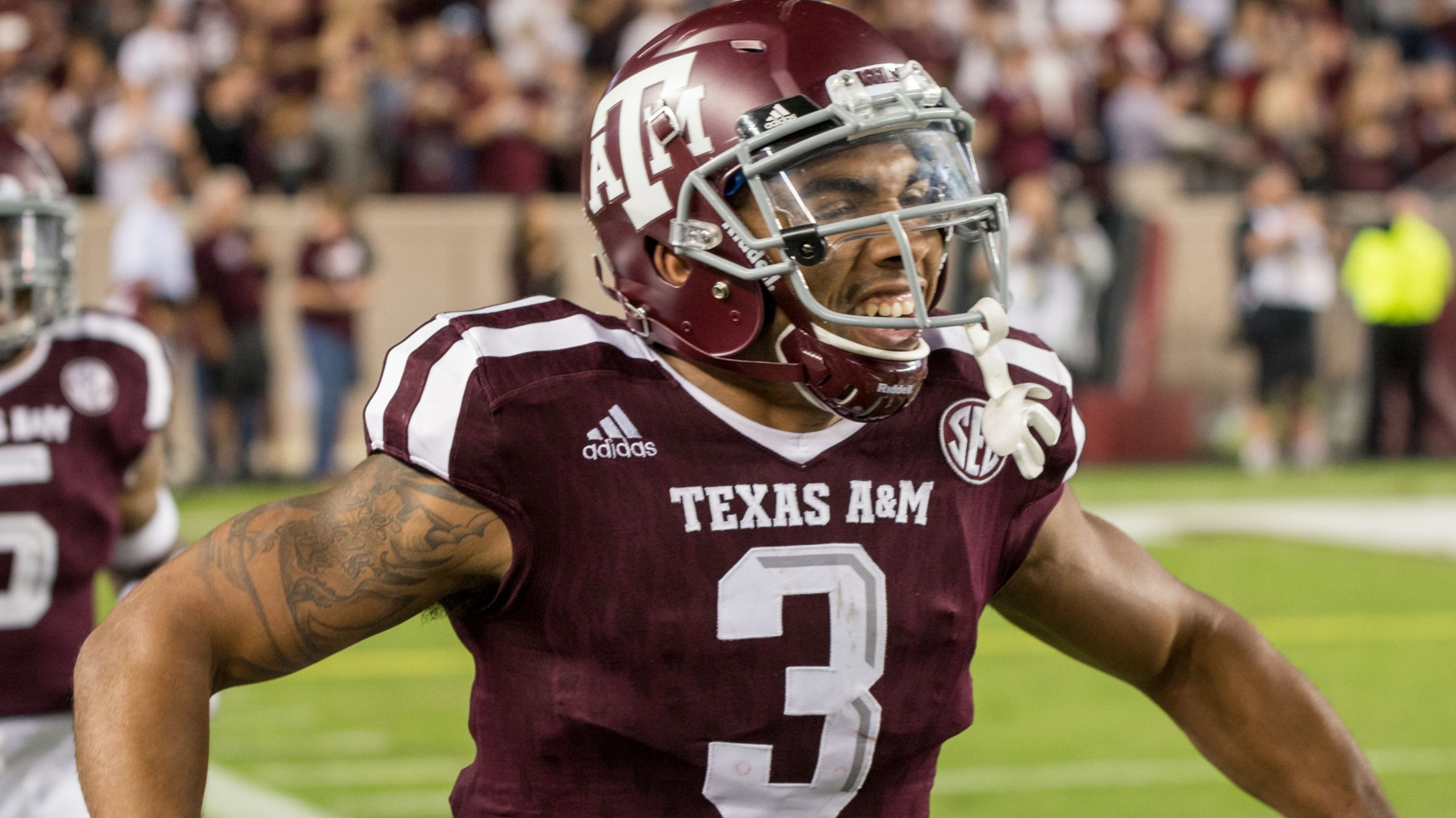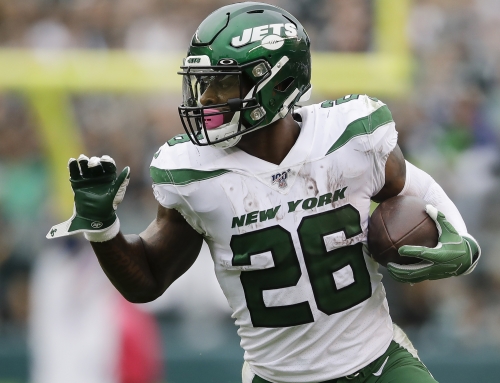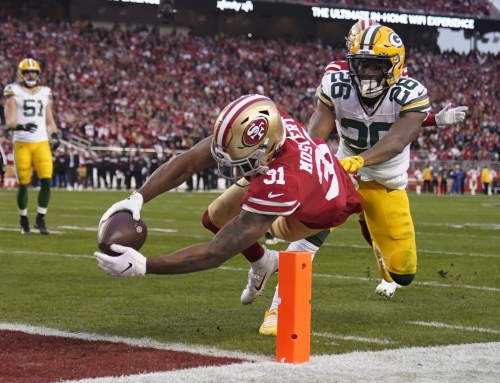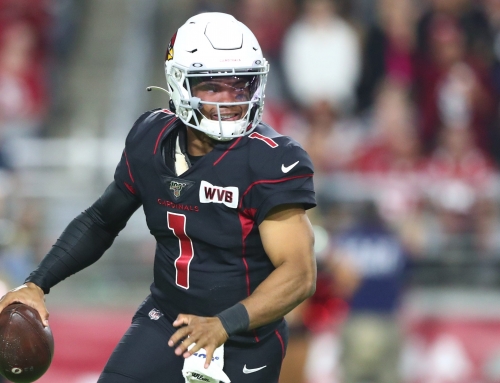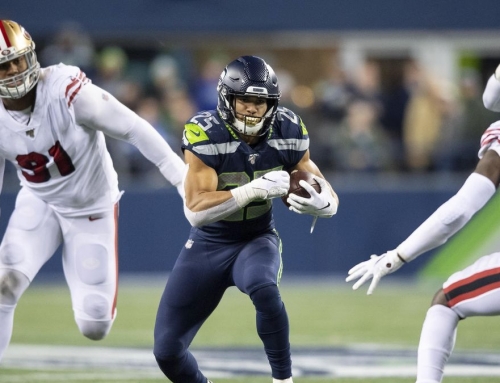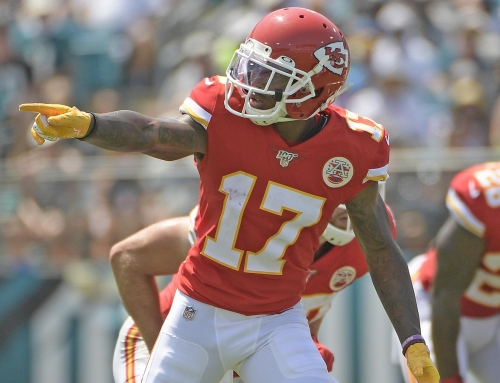As we enter the rookie draft season, it’s important to consider two aspects surrounding each player: their talent and their opportunity.
By this time, everyone has their own opinions on the talent of the players in this year’s class, and those opinions shouldn’t change based on what happened in the NFL Draft. The big piece of the puzzle that has shifted after the NFL Draft, though, is the player’s opportunity situation. One way to examine year one opportunity for rookie wide receivers is to focus on the number of targets a given team has lost from its receiving corps as a result of free agency, trades, or retirements.
Below, we’ll look at the six teams who drafted the top rookie wide receivers and analyze what type of year one opportunity potential those rookies possess based on the number of targets each of their team’s receiving corps lost from last season:
Rookie WR Opportunity: The Good
Arizona | 149 missing targets
When the Cardinals got rid of their J. Brown duo, they also left a big gaping hole at wide receiver opposite of Larry Fitzgerald, with only Brice Butler available to step in. Butler certainly believes he is capable of being a primary wide receiver in the league, but he’s never seen more than 35 targets in his five-year NFL career thus far. Because of that, Christian Kirk, almost by default, immediately steps into a role that could see him being force-fed nearly 120 targets in his rookie season. Many pundits have noted that Kirk would fit best in the slot role in the pros, but with Fitzgerald occupying the big slot role, Kirk will probably move around throughout the offense. As with all rookies, expectations should be tempered somewhat because learning a pro offense can take time to master, particularly if Kirk is forced into an outside role he’s not comfortable with or unable to handle. Although, with a mentor like Fitzgerald, and no meaningful competition for snaps, Kirk looks like a strong candidate to be this year’s leading rookie wide receiver.
Dallas | 249 missing targets
The Cowboys vacated a massive amount of targets by showing Dez Bryant the door this offseason and did so again when Jason Witten unexpectedly retired. So when Dallas drafted Michael Gallup, fantasy expectations began to soar. Expected to walk in and start from day one, Gallup has seen his stock rise as much as anyone else in this rookie crop, and it’s easy to talk yourself into a scenario where he becomes a reliable option for Dak Prescott in year one. Allen Hurns is the most significant free agent addition for Dallas, and while he will most likely command 100+ targets as the de-facto Cowboys WR1, there’s still plenty of opportunity for Gallup. Settling somewhere in the 80-90 target range seems like a realistic possibility for the rookie, and that’s plenty enough to maintain fantasy relevancy.
Rookie WR Opportunity: The Actually Not So Bad
Pittsburgh | 120 missing targets
When the Steelers drafted James Washington in the second round, his value predictably dropped slightly in dynasty rookie drafts. Despite Pittsburgh having a knack for drafting and developing wide receivers, Washington joins a crowded receiving corps with all-world Antonio Brown and rising star Juju Smith-Schuster. On closer inspection though, the landing spot may not be all that bad. The Steelers lost a lot of targets by trading away Martavis Bryant and letting some tertiary options walk. We can assume JuJu gets a bump from the 80 targets he received last year, but even if that’s the case, do we expect Vance McDonald or Darrius Heyward-Bey to siphon the rest? If so, Washington has bigger problems than his landing spot. Expecting the rookie to receive 70-80 targets isn’t crazy, and in this offense, the potential for him to reach fantasy relevancy is there for the taking.
Denver | 109 missing targets
The narrative on Courtland Sutton going to the Broncos in the second round has consistently been “may not contribute much in 2018 but in 2019 look for Denver to cut Emmanuel Sanders and/or Demaryius Thomas.” While that is true, what’s stopping Sutton from contributing in 2018? Not one of the wide receivers who left for free agency had more than 56 targets in 2017, but when you add all of Denver’s missing targets, the big picture depicts a fairly sizable hole. The Broncos failed to add any new receiving threats through free agency so Sutton has every chance to become the third option in this passing game and soak up as many of those looks as he can. He may not be an every-week starter, but the potential to contribute more than expected is there.
Rookie WR Opportunity: The Ugly
Carolina | 81 missing targets
A riser through the Draft process, D.J. Moore was the closest to consensus WR1 in this rookie crop that we got. After being drafted as the first wide receiver off the board to Carolina, his dynasty rookie draft value hasn’t changed. However, that stake as the first wide receiver off the board may not be justified. Carolina didn’t lose anyone in free agency other than a backup tight end, and they’re looking forward to the return of star tight end Greg Olsen from injury. Olsen averaged 125 targets in the three years before getting hurt in 2017, and even if he’s lost a step, it’s hard to see him commanding anything less than 90 targets this season. Additionally, it’s unlikely that the Panthers phase breakout wide receiver Devin Funchess out of the attack. Therefore, after Olsen and Funchess, Moore would be left to compete with Torrey Smith and Panthers 2017 second round pick Curtis Samuel for leftover targets. In a Carolina offense that traditionally leans on the run game, it’s hard to envision a scenario where Moore does not disappoint fantasy owners in his rookie season.
Atlanta | 73 missing targets
Okay, so maybe this isn’t necessarily ugly, but it’s still worth discussing. Calvin Ridley heading to the Falcons seemed to be the perfect landing spot for the talented rookie. He gets to play number two to a bonafide stud in Julio Jones, allowing him to avoid top coverages. He also gets to play the majority of his games on turf which would only aid his speed game. Ultimately, this is an accurate assessment, and the Jones-Ridley combo projects to be a great one in a few years. In the short term, however, it may be tough for Ridley to meet expectations as the second wide receiver off the board in dynasty rookie drafts. To meet the target opportunity of some of these other players, he’s going to need to eat into Mohamed Sanu’s piece of the pie. That doesn’t sound like a tall task, but Sanu has proven to be an underrated player for both fantasy and real-life purposes. For a Falcons team focused on Super Bowl contention, trusting a rookie over an established veteran may not be in their best interest, even if that rookie is an AARP member.


